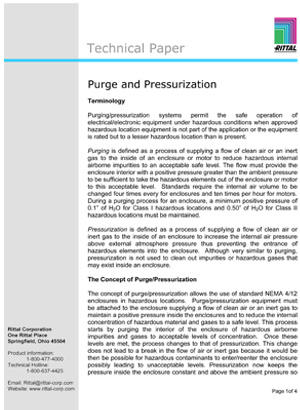Rittal’s Enclosure Materials White Paper
Selecting an enclosure made of the correct material for your application ensures that your enclosure will last as long as possible and will… Read More …
Selecting an enclosure made of the correct material for your application ensures that your enclosure will last as long as possible and will… Read More …
Since control panels and their components are integral to the success of your facility, it is important to take every step possible to ensure their protection and longevity. When temperatures drop below the minimally acceptable range for electronics, the risk of condensation and eventually corrosion becomes eminent. Electrical enclosure heaters are… Read More …
For technical aspects of stainless steel that are crucial to the selection of industrial enclosures including composition, distringuishing properties of different grades, chemical resistances, suitable applications and general benefits of stainless steel versus carbon steel enclosures read Rittal’s stainless steel enclosures and industrial applications white paper.
Excerpt:
By definition, stainless steel is a metal alloy containing at least 10.5% chromium by mass. In a process known as passivation, the chromium within the metal forms a very thin layer of chromium oxide when exposed to the oxygen in our atmosphere. This layer continually protects the metal beneath and spontaneously regenerates if the surface is scratched — which is why stainless steel enclosures provide excellent corrosion resistance without… Read More …

What is the function of purge/pressurization systems? What standards apply to purge and pressurization? Find out in Rittal’s purge and pressurization white paper. Read More …
Selecting the correct material for the enclosure environment is extremely important to maximizing the lifespan of your enclosure. Aluminum, fiberglass, stainless steel and painted carbon steel are all corrosion resistant materials. While it is important to select enclosures that withstand corrosion, it is… Read More …